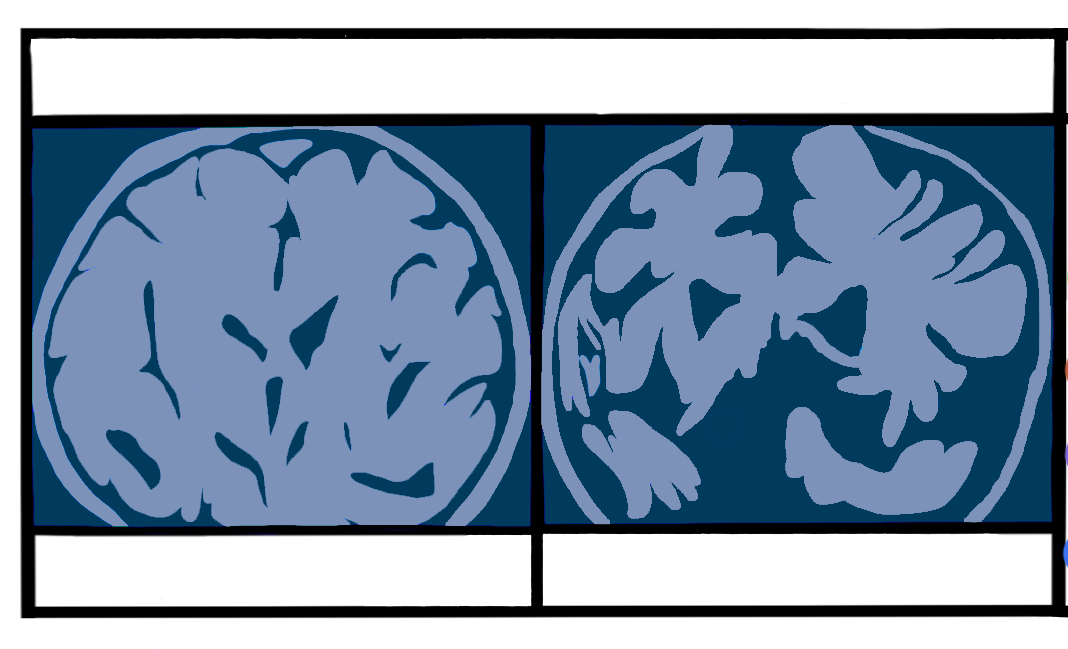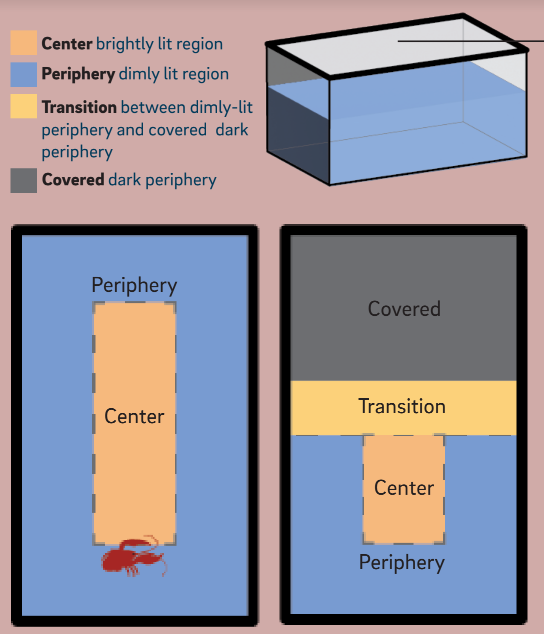Understanding the effects of alcohol consumption on brain development and behavioral patterns of adolescents to increase quality of life
Drinking-related health concerns have substantially increased throughout the COVID-19 pandemic. The
pandemic has increased levels of anxiety, stress, and boredom, leading more people to turn to drinking as both a coping mechanism and a way to pass time at home. A September 2020 study in the Journal of the American Medical Association Network Open found that alcohol consumption in the United States increased 14 percent since 2019. Such elevated drinking habits can dramatically alter long-term health, potentially increasing the risk of health problems like high blood pressure, stroke, cancer, and liver and heart diseases.
According to the Alcohol Rehab Guide, it is estimated that four out of five college students drink alcohol to different extents. Most see alcohol as a substance with minimal harmful effects and therefore, tend to associate drinking-related health problems with excessive drinking habits. Contrary to popular belief, the majority of people negatively affected by alcohol don’t have alcohol dependence — a chronic disease in which a person is unable to control their drinking — but instead are social drinkers and those who only occasionally drink.
The recent growth in alcohol consumption draws greater attention to the occurrence of alcohol-related neurological and behavioral consequences. Undergraduate researchers at UC San Diego are helping uncover the effects of alcohol consumption on this generation.

This type of brain tissue is found in the inner layer of the cortex and facilitates information transfer. Normal 43-year old (left) vs alcoholic 43-year old (right)
Alcohol on the Brain
At the UC San Diego Department of Psychiatry, the Tapert Laboratory focuses on understanding both risk factors as well as neural implications of adolescent substance use. Dr. Susan Tapert is the codirector and a site principal investigator with the National Consortium on Alcohol and Neurodevelopment in Adolescence (NCANDA), which aims to determine the effects of alcohol on the developing adolescent brain and examine brain characteristics that can be used to predict future problems with long-term alcohol use. Under the guidance of Dr. Tapert is fourth-year undergraduate researcher Tien Ho. Ho’s main motivation for involvement in the lab stems from her interest in the investigation of the longitudinal effects of alcohol in the lives of adolescents.
Ho conducts brain imaging scans of adolescent participants and searches for possible disruptions in brain development as a result of substance abuse. A recent project examined the effects of adolescent heavy drinking on frontal brain development. Frontal brain systems control higher cognitive functions such as memory, emotions, problem-solving, and motor function. This part of the brain also contains a significant amount of white matter, which consists of the insulated part of neurons called myelinated axons. Such axons are known as communicative fiber pathways of the brain, carrying electrical signals that are vital for proper functioning throughout the brain.
In the study, heavy drinking was quantified as a value greater than one on a four-point scale via a youth-adjusted Cahalan score, which is a self-reported metric for the quantity and frequency of alcohol consumption. To map the white matter in the frontal lobe, Ho and other researchers utilized diffusion tensor imaging (DTI) scans. Unlike traditional magnetic resonance imaging scans, which merely take structural brain images, DTI scans offer more details on the structure and function of neurons in imaged sections. DTI scans measure fractional anisotropy, which includes cellular density, myelination, and axonal size within nerve fiber bundles to determine the efficiency of communicative fiber pathways.
The study found that heavy alcohol consumption among adolescents damaged white matter structures. Specifically, there was a reduction of fractional ansiotropy in white matter signaling pathways among individuals who consumed large amounts of alcohol compared to those who did not. DTI imaging showed less water diffusion ability, suggesting a disruption in neuronal fiber communication pathways due to a decreased presence of axonal signals. Such disturbance was most pronounced in the front and body of the corpus callosum, the largest white matter region of the brain that connects the right and left hemispheres of the brain and serves as the integration of frontal brain system communication. Damage to the corpus callosum can lead to loss of speech, movement control, and the ability to multitask. Since the white matter system expands and restructures from birth through adolescence, it is important for college students to understand the present yet unseen negative effects of alcohol on their brains, even if
the neurological effects aren’t directly symptomatic.
Ho believes her lab’s efforts bring more awareness to the issues surrounding early drinking habits and highlight the need for continued research to further define its effects. While such effects were observed
within adolescents who drank substantial amounts of alcohol, future studies may explore whether moderate intake consumption in the general adolescent population has the same effects.
Cray-tive New Methods
Imaging studies are advantageous, yet they are not ideal for examining alcohol’s behavioral effects, so alternate scientific models are needed to study the effects of alcohol on behavior. In contrast to Ho’s research on the neurobiological effects of alcohol, second-year UC San Diego Paths Mentorship Program scholar, Celine Yang, focuses on alcohol’s behavioral and cognitive effects. Yang is an undergraduate researcher at the Taffe Laboratory, searching for new and innovative models to study the behavioral effects of shifting from casual to repetitive drug use.
Yang, alongside her lab colleagues Dr. Arnold Gutierrez and research assistant Kevin M. Creehan, recently developed a novel crayfish model to study the effects of alcohol use on behavior. Historically, researchers have used mice as research subjects due to convenience and genetic resemblance to humans. However, crayfish are a cheaper alternative model that allow for an accurate neurological comparison to humans. This is because crayfish and humans share controlling voluntary movement and reward pathways. In humans, the pathways allow dopamine to travel throughout the brain and body in order to relay reward-related behavior. For example, when an individual consumes alcohol, neurons release dopamine, thus producing feelings of pleasure. Regarding crayfish, researchers have recently found that their dopaminergic systems are useful for identifying the specific neural circuitry and neurochemistry of decision making that is not yet directly possible to measure in humans. As a result, studying crayfish can allow researchers to make predictions about human dopaminergic responses to substance abuse.

The light-dark test is used to monitor the anxiety-related behavior of animals in a two-chambered light-dark arena over a defined period of time. Under normal conditions, the animals generally tend to avoid brightly hidden areas. But under the influence of alcohol, they are more likely to enter the lit area.
Yang’s experiment used crayfish as test subjects and modeled previous experiments on mice. She used a popular research method known as a light-dark box test where crayfish were placed in an arena with a dark periphery and an illuminated central area. Since crayfish are a prey species, they generally avoid brightly lit areas to stay hidden from predators. However, once intoxicated, the researchers hypothesized that crayfish might be more active in the illuminated area due to the acute anxiety-reducing effects of alcohol consumption. The crayfish were administered low to moderate concentrations of alcohol: 0.0 M, 0.1 M, 0.5 M, and 1.0 M, resulting in different blood alcohol concentrations (BAC), which indicates the percentage of alcohol in the bloodstream. The 0.5 M dose resulted in a BAC of approximately 0.02 g/100mL in crayfish, which roughly translates into the BAC of a person who has had one standard drink such as a 12-ounce can of beer. At this BAC, people often experience mood elevation and some sensory or cognitive impairment; however, it should be noted that BAC in humans is highly variable and depends on many factors, primarily weight and gender. The highest alcohol dose of 1.0 M in the experiment translates to a BAC of 0.046 g/100mL, which equates to approximately two standard drinks for humans and is often associated with the sensation of being “buzzed.” For humans at this stage, cognitive skills are impaired and behavioral changes may occur, such as feelings of euphoria and increased self-confidence.
As expected, Yang found that the control group who were given 0 M of alcohol tended to occupy the dark periphery of the arena. However, crayfish with increased levels of alcohol consumption between 0.5 M and 1 M traveled towards the arena’s lit center. This dramatic change in behavior reflects decreased anxiety levels induced by alcohol consumption. Since the crayfish were less anxious and more assured of their safety while “under the influence,” they moved away from the dark periphery.
These results parallel previous findings from traditional light-dark box experiments with mice, thus opening up the possibility of using crayfish as alternatives to rodents for other behavioral questions. Yang’s crayfish model is especially beneficial for upcoming research because it potentially provides additional insight into how alcohol affects behavior in a more cost-effective way compared to mice models. She plans to broaden her study of drug abuse by researching the behavioral effects of other substances, such as nicotine, on crayfish.
The discoveries from the light-dark box test with both animals infer that alcohol can lower anxiety levels, leading to changes in behavior such as confidence enhancement. Such an increase in confidence is
comparable to the response to alcohol seen in humans.
However, while feelings of boldness may seem like a positive effect for shy college students at first, these enhanced feelings can also facilitate risky decision-making. Although the invertebrate subjects that were tested did not suffer consequences from moving into the light, real-life behaviors of following poor judgment have their consequences, whether it’s crayfish exposing themselves and being eaten by a water snake or an intoxicated college student getting behind the wheel. With researchers beginning to understand how alcohol can change behavior, college students can become increasingly aware of their conduct and how to stay safe after engaging in a night of drinking.
Reeling it All In
To see the full picture of alcohol consumption, progress towards understanding its adverse health effects requires different research methods and experimental models to examine both biological and behavioral consequences of alcohol consumption. Brain imaging studies in humans shine a light on the dangers of drinking habits formed during development, whereas crayfish studies show that even little to moderate drinking has impacts on behavior. Understanding the consequences of alcohol usage is vital to promoting a healthier lifestyle for individuals just starting to enter adulthood. Since the damaging side effects of alcohol are primarily associated with excessive drinking, many may be untroubled by their own moderate consumption. However, this prompts further investigation of the consequences of moderate consumption on both neurology and behavior.
Moreover, future research on how environmental factors may affect college drinking is needed to fully understand the most effective methods to reduce alcohol consumption. Alcohol usage is one of the most difficult habits to change because drinking is ingrained within American culture, especially in college life. College-age students continue to drink moderately, not fully understanding its potentially harmful effects. Such studies bring to light the direct effects of alcohol that college students should take into consideration when making their next Friday night plans.
Written by Sevim Bianchi & Elle Epstein
Sevim is fourth year student majoring in Human Biology and minoring in Global Health. Elle is first year student majoring in Cognitive & Behavioural Science.

